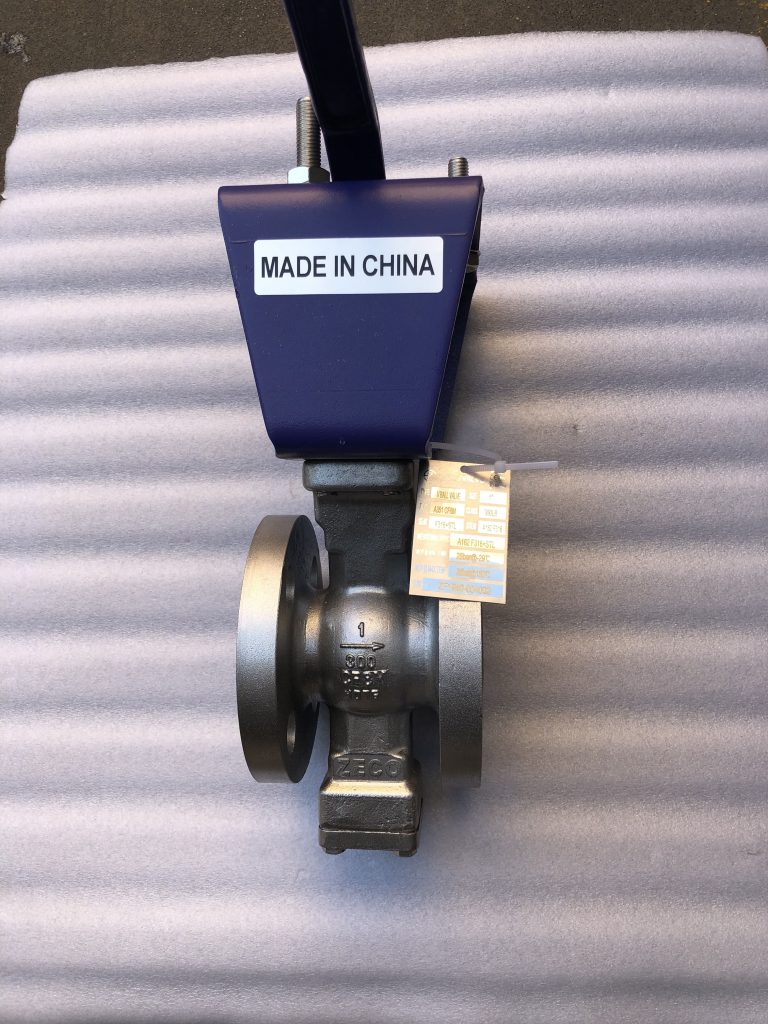What is a Ceramic Ball Valve?
A ceramic ball valve is a type of ball valve which has internal components made of ceramic materials. Such ceramic components include a ball, seat, and lining. A ceramic ball valve has a body made of a metallic material such as stainless steel or carbon steel. The metallic body is used to protect the ceramic trim from damage by sudden mechanical or thermal shock. A ceramic ball valve uses a ball with a hole at its center where fluid flows through when the handle is rotated. Ceramic ball valves can also be automatic by using actuators like pneumatic, electric, or hydraulic actuators. The benefits of using a ceramic ball valve over other materials like steel include lower mass and high resistance to wear. Ceramic ball valves have excellent resistance to corrosion and abrasion. Such properties of ceramic ball valves are used in severe applications prone to abrasion and corrosion. Ceramic ball valves are used in various industries such as petroleum, chemical engineering, and manufacturing plants.

Specifications of Ceramic Ball Valves
- Size:1/2″ to 12″
- ANSI Class:150 to 600
- Std. Materials:Ceramic Lined Stainless Steel
- Temperature Range: -22 to 590℉(-30 to 310℃ )
Features of Ceramic Ball Valves
- Completely ceramic flow path, no metallic components
- Material designed to withstand thermal shocks
- Robust backlash free ball to stem connection, stainless steel stem
- Lug and wafer body type options
- One piece body
- Low Cv trim options for small capacity applications
- Live loaded packing
Structure of Ceramic Ball Control Valve
Trim components of ceramic ball valves adopt Alumina or zirconia ceramic with high chemical stability and hardness (HRC88), only inferior to diamond.
The ball is made with advanced grinding equipment and advanced process technology that can ensure high precision ball roundness, a good surface. The self-lubricating capability of ceramic ensures good sealing after polishing, which radically changed the defects that metal hard sealing valve has such as big torque, and non-corrosion-resistant sealing surface.
The ceramic valve adopts new high-tech type structural ceramic material as sealing and wearing parts, which can improve abrasion and corrosion resistance, and sealing performance, prolong lifespan, 2-4 times of lifespan than Titanium Alloy and Monel valve. Using ceramic valves can reduce repair or replacement costs and improve the safety, and stability of the operating system.
Related Tags :
Ten articles before and after
More About Our Ceramic Ball Control Valve | Professional valve manufacturer | Quality valve supplier
More About Knife Gate Valves Part 2 | Professional valve manufacturer | Quality valve supplier
More About Knife Gate Valves Part 1 | Professional valve manufacturer | Quality valve supplier
Meet our New ZD Valve Range | Professional valve manufacturer | Quality valve supplier












